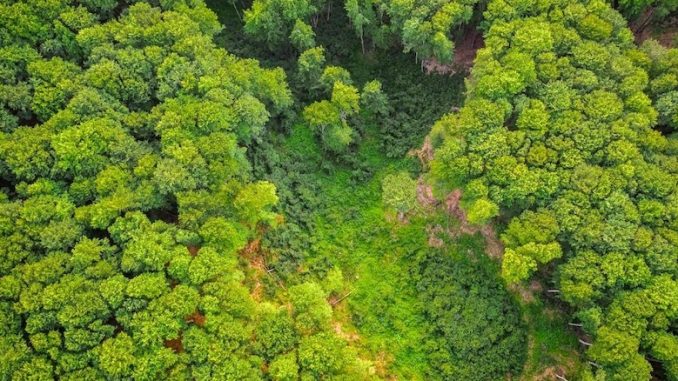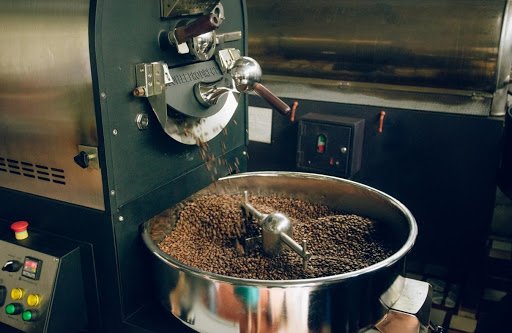
We explore the varying levels of coffee’s carbon footprint.
BY ALEXA ROMANO
SPECIAL TO BARISTA MAGAZINE ONLINE
Cover photo by Lucian Dachman for Unsplash
Have you ever thought about the carbon impact that coffee has on our planet? Coffee is a prominent topic both in climate change discussions and sustainability initiatives. Recently, we published an article about a new digital carbon measurement tool that analyzes crop data and assesses its potential future inputs as related to carbon net capture. Today, we’re going to further explore that topic by breaking down carbon emissions in coffee and what companies are doing to combat this.
Increasingly, companies both large and small are addressing their environmental impact by pledging to reduce their carbon footprint, which can be defined as the amount of greenhouse gases, specifically carbon dioxide, emitted into the atmosphere by something (such as a person’s activities or a product’s manufacture and transport) during a given period.

Carbon Offsetting
Some companies also buy carbon offsets. Carbon offsets can come in many shapes, forms, and types and can be classified as 1) avoided emissions and 2) removed emissions. An example of an avoided emission would be protecting a forest that was destined for logging. A company would then get carbon credits for the emissions avoided.
An example of a removed emission would be changing agricultural practices in such a way that they go from a carbon source to a carbon sink, like shifting from traditional to regenerative agriculture. A carbon source is anything that releases more carbon into the atmosphere than it absorbs—for example, the burning of fossil fuels. A carbon sink is anything that absorbs more carbon from the atmosphere than it releases—for example, plants, the ocean, and soil.
The Voluntary Carbon Market
The voluntary carbon market depends on the supply and demand of carbon credits by corporations. Companies attempting to reduce their carbon emissions through the purchase of carbon offsets can do so by buying minted carbon offsets. Minted offsets are carbon offset products that have already been produced and verified, such as these. Once companies engage the carbon market by reducing or offsetting their emissions, they are classified by one of the four categories below:
- Carbon Neutral: Those companies that do not make any attempt to reduce their own emissions but will buy enough carbon offsets to offset their own. Essentially, these companies do not decarbonize their operations at all.
- Carbon Net Zero: Those companies that have reduced their emissions as much as possible, and then offset the rest of their emission by buying carbon offsets.
- Carbon Zero: Those companies that do not need to buy any carbon offsets because they do not produce any emissions.
- Carbon Negative: Those companies that actively pull carbon out of the air and/or sequester carbon. Carbon sequestration secures carbon dioxide to prevent it from entering the Earth’s atmosphere. The idea is to stabilize carbon in solid and dissolved forms so that it doesn’t cause the atmosphere to warm.

Carbon Offsetting in Coffee
The coffee industry is beginning to grasp and publicize the many implications of coffee production and consumption, causing producers, roasters, and consumers to explore their roles in carbon emissions. To fully understand the relationship between coffee and carbon, let us imagine points on the coffee supply chain where carbon emissions could be created or decreased. Consider that coffee needs to be grown, processed, shipped, roasted, shipped again, and finally brewed.
Production: How were the coffee beans grown? Were native trees displaced for the purpose of coffee to be planted? Were fertilizers used? If so, the production of coffee becomes a carbon source because the manufacturing of fertilizer requires the burning of fossil fuel. Alternatively, if the coffee was planted in an area that was recently deforested, the growth of coffee becomes a carbon sink since the coffee tree itself sequesters carbon.
Processing: How were the beans processed? What were the energy costs for processing the coffee? How much water was used to remove the pulp? Did wet-milled beans contaminate any water sources? Were the beans dried naturally? Or were they dried by the burning of firewood, diesel fuel, or by an electric motor?
Transportation: How did the beans get from origin to café? The majority of the coffee industry’s emissions come from transportation by way of ship, railroad, and truck. How much fuel was burned by the coffee’s journey to the café, and how much energy was expended by customers traveling to the café?
Roasting: How were the beans roasted? The type of roasting equipment determines coffee’s carbon impact. According to Dennis Vogel, director of marketing and sales at Loring, a roaster manufacturer headquartered in California, traditional roasting machines will produce visible emissions (i.e., smoke) and odors, as well as pollutants such as nitrogen oxide, carbon monoxide, and carbon dioxide, unless accompanied by a filtering system or external afterburner. Afterburners, however, also become a secondary consumer of fuel, traditionally natural gas or propane.
Service: How much energy is the café/ venue expending? How much energy, and what kind of energy, is being used to power the building structure itself? What are the carbon emissions generated by cafés’ suppliers of milk, cups, machinery, and other materials? How is waste managed?
In our analysis, we found that the coffee supply chain provides actions and choices that either produce or reduce carbon emissions. Additionally, more and more coffee companies are becoming transparent with their sustainability reports. Given the relationship between coffee and carbon, these companies should increasingly address, measure, and reduce the carbon emissions involved in their production processes just as other industries do, striving for carbon neutrality, carbon net zero, carbon zero, and even carbon negative.
The next article in this series will focus on carbon sequestration from coffee (coffee that creates carbon sinks) and coffee organizations that are currently engaged in making carbon-negative coffee.

Alexa Romano (she/her) is a recent graduate from Stanford University with an MA and BA in Cultural and Social Anthropology with a double minor in Ethics in Society and Photography. Her research investigates the coffee commodity chain and looks at the mystified, obscured, and ethical/ unethical relations that tether producer societies to consumer societies with a particular focus on Costa Rican smallholder producers. In addition to freelance writing, Alexa is a HIIT instructor with a wellness tech company. Currently, she is learning barista skills at Ritual Coffee in San Francisco. See Alexa’s work here.

